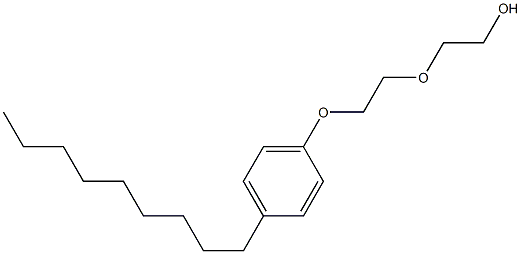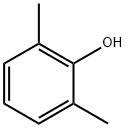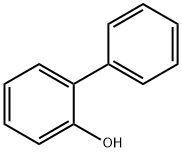Nonylphenol
- CAS NO.:25154-52-3
- Empirical Formula: C15H24O
- Molecular Weight: 220.35
- MDL number: MFCD01778271
- EINECS: 246-672-0
- SAFETY DATA SHEET (SDS)
- Update Date: 2025-07-04 15:33:54

What is Nonylphenol?
Chemical properties
Pale-yellow, viscous liquid; slight phenolic odor.Insoluble in water; soluble in most organic solvents. Combustible.
The Uses of Nonylphenol
Nonylphenol (NP) is an alkylphenol and together with its derivatives, such as trisnonylphenol phosphite (TNP) and nonylphenol polyethoxylates (NPnEO), they are used as additives in the plastic industry, e.g., in polypropylene where nonylphenol ethoxylates are used as hydrophilic surface modifiers or as stabilizer during crystallization of polypropylene to enhance their mechanical properties. They are also used as antioxidant, antistatic agents, and plasticizer in polymers, and as stabilizer in plastic food packaging materials.
The Uses of Nonylphenol
In the preparation of lubricating oil additives, resins, plasticizers, surface active agents.
The Uses of Nonylphenol
Principal use as an intermediate in the production of nonionic ethoxylated surfactants; as an intermediate in the manufacture of phosphite antioxidants used for the plastics and rubber industries
Definition
A mixture of isomeric monoalkyl phenols, predominantly p-substituted.
General Description
A thick, yellowish liquid with a slight phenolic odor. Insoluble in water. Flash point 285°F. Burns although difficult to ignite. May irritate the skin. Used in the manufacture of oil additives, surfactants, fungicide preparations and plastics and rubber.
Air & Water Reactions
Insoluble in water.
Reactivity Profile
Nonylphenol behaves as a very weak organic acid. Incompatible with strong reducing substances such as hydrides, nitrides, alkali metals, and sulfides. Flammable gas (H2) is often generated, and the heat of the reaction may ignite the gas. Likely to react exothermically with concentrated sulfuric acid and nitric acid.
Health Hazard
Moderately toxic if swallowed. Severely irritating to skin and eyes.
Fire Hazard
Non-combustible, substance itself does not burn but may decompose upon heating to produce corrosive and/or toxic fumes. Some are oxidizers and may ignite combustibles (wood, paper, oil, clothing, etc.). Contact with metals may evolve flammable hydrogen gas. Containers may explode when heated.
Chemical Reactivity
Reactivity with Water: No reaction; Reactivity with Common Materials: No reaction; Stability During Transport: Stable; Neutralizing Agents for Acids and Caustics: Not pertinent; Polymerization: Not pertinent; Inhibitor of Polymerization: Not pertinent.
Safety Profile
Moderately toxic by ingestion andskin contact. A severe skin and eye irritant. Combustiblewhen exposed to heat or flame. When heated todecomposition it emits acrid smoke and irritating fumes
Properties of Nonylphenol
| Melting point: | 56.34°C (estimate) |
| Boiling point: | bp 293-297° |
| Density | d420 0.950 |
| vapor density | 7.59 |
| refractive index | nD20 1.513 |
| Flash point: | (open cup) 300°F |
| form | Clear, straw-colored liquid;
technical grade is a mixture of isomers, predominantly
para-substituted |
| color | Clear, straw-colored, viscous liquid |
| Odor | Phenolic; like disinfectant. |
| CAS DataBase Reference | 25154-52-3(CAS DataBase Reference) |
| NIST Chemistry Reference | Nonylphenol(25154-52-3) |
| EPA Substance Registry System | Nonylphenol (25154-52-3) |
Safety information for Nonylphenol
Computed Descriptors for Nonylphenol
Nonylphenol manufacturer
Triveni Interchem Private Limited (Group Of Triveni Chemicals)
New Products
4,4-Difluoropiperidine hydrochloride tert-butyl 9-methoxy-3-azaspiro[5.5]undecane-3-carboxylate Indole Methyl Resin N-Isopropylurea N,N-Dicyclohexylcarbodiimide(DCC) MELDRUMS ACID 5-METHYLISOXAZOLE-4-CARBOXYLIC ACID Magnessium Bis glycinate Zinc ascorbate 1-bromo-2-butyne 2-acetamidophenol 9(10H)-anthracenone Erythrosin B, 4-Piperidinopiperidine 2-((4-morpholinophenylamino) (methylthio) methylene) malononitrile 2,4-dihydroxybenzaldehyde 3-(4-morpholinophenylamino)-5-amino-1H-pyrazole-4-carbonitrile Methyl 2-methylquinoline-6-carboxylate 2,6-dichloro-4-nitropyridine 4-Bromo-2-chlorobenzonitrile 2-(benzylamino)acetic acid hydrochloride 4-(tert-Butoxycarbonylamino)but- 2-ynoic acid 3,4-dihydro-2H-benzo[b][1,4]dioxepine 1-Phenyl-1-cycloprppanecarboxylicacidRelated products of tetrahydrofuran








You may like
-
 Nonyl Phenol 99%View Details
Nonyl Phenol 99%View Details -
 Nonyl Phenol CASView Details
Nonyl Phenol CASView Details -
 Nonyl Phenol CASView Details
Nonyl Phenol CASView Details -
 Industrial Grade Nonylphenol Liquid CAS 25154-52-3View Details
Industrial Grade Nonylphenol Liquid CAS 25154-52-3View Details
25154-52-3 -
 Liquid Nonylphenol, DrumView Details
Liquid Nonylphenol, DrumView Details
25154-52-3 -
 Nonylphenol Cas No 25154-52-3View Details
Nonylphenol Cas No 25154-52-3View Details
25154-52-3 -
 NONYL PHENOLView Details
NONYL PHENOLView Details
25154-52-3 -
 Nonylphenol CAS 25154-52-3View Details
Nonylphenol CAS 25154-52-3View Details
25154-52-3
